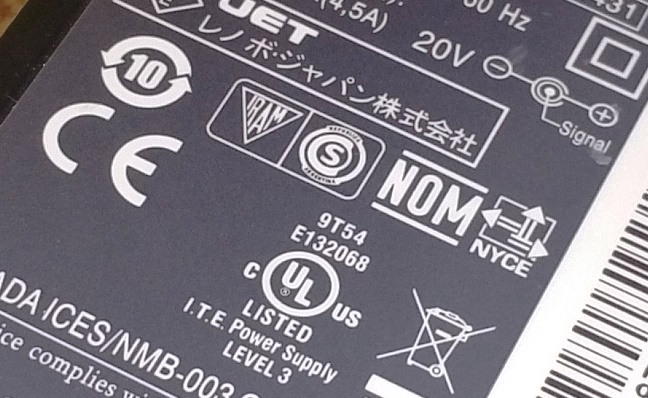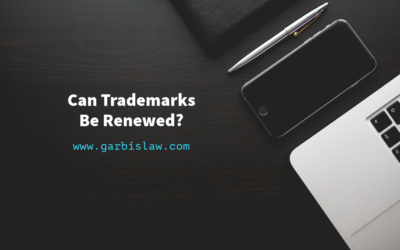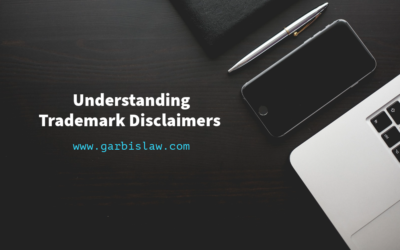Take a look at your phone charger, computer power adapter, or pretty much any other electronic device you own…you’ll likely see a bunch of symbols on the back like the ones in this picture.
Most of you have probably noticed them before, but you might not pay much attention to them.
The CE mark indicates that a product complies with safety, health or environmental requirements set by the European Commission and is mandatory on certain products sold within the European Economic Area.
The one you are most likely familiar with is the UL mark, which is provided by Underwriter Laboratories, to certify that a product meets a higher standard for consumer protection and safety.
What you may not know is that these symbols are called certification marks and are governed by trademark law.
WHAT ARE CERTIFICATION MARKS?
Certification marks are words, names, symbols, slogans, or any combination of those licensed by their owners for the use on products to certify origin, material, mode of manufacture, quality, accuracy, or other characteristics of the goods/services. Their main purpose is to inform consumers that the products or services they are buying meet some minimum standards.
HOW DO CERTIFICATION MARKS DIFFER FROM TRADEMARKS?
Although certification marks are governed by trademark law, there are differences. A trademark is used to identify the source of specific goods or services. A certification mark, on the other hand, is not used by the actual owner of the mark and it does not indicate the source of the goods or services. Instead, it indicates that a product meets certain standards.
Although the owner of a certification mark licenses the mark to others whose products meet its requirements, the certification mark owner does not control the nature or quality of the goods the mark is placed on, as may be the case with a regular trademark. The only control the owner has is whether or not those specific goods/services meet the requirements set by the company in order to be considered “certified.”
As you can see, there is a significant amount of value if your products have a certification mark affixed to them. With that said, there are a number of counterfeit products which contain false certification marks in order to come off as legitimate products.
This just happened in Chicago, where the U.S. Customs and Border Protection (“CBP”) confiscated more than 16,000 hoverboards worth about $6 million. They found that these hoverboards posed a health risk and used trademarks without authorization.
Can you guess what trademarks they used?
William Ferrara, director of field operations for the Chicago CBP office said the hoverboards had fake UL certification marks on them giving consumers a “false sense of security.” In additional to that, some hoverboards had counterfeit Samsung logos on them as well.
Aside from giving consumers a false sense of security, it’s blatant trademark infringement, which will lead to the seizure of all of those goods.
The CBP, a department of Homeland Security, maintains a trademark recordation system to assist in its efforts to prevent the importation of counterfeit goods. It has the authority to detain, seize, examine and forfeit or destroy infringing goods as well as make infringement determinations subject to appellate review by US. federal courts.
Next time you get a great deal on a product, make sure you double check those certification marks. Chances are, it might be a counterfeit…





